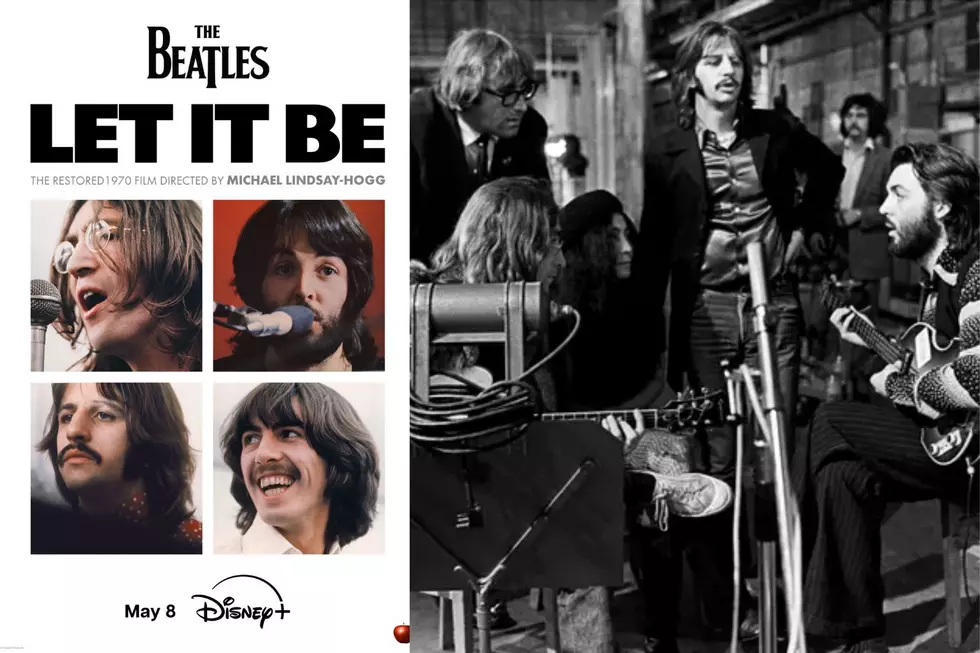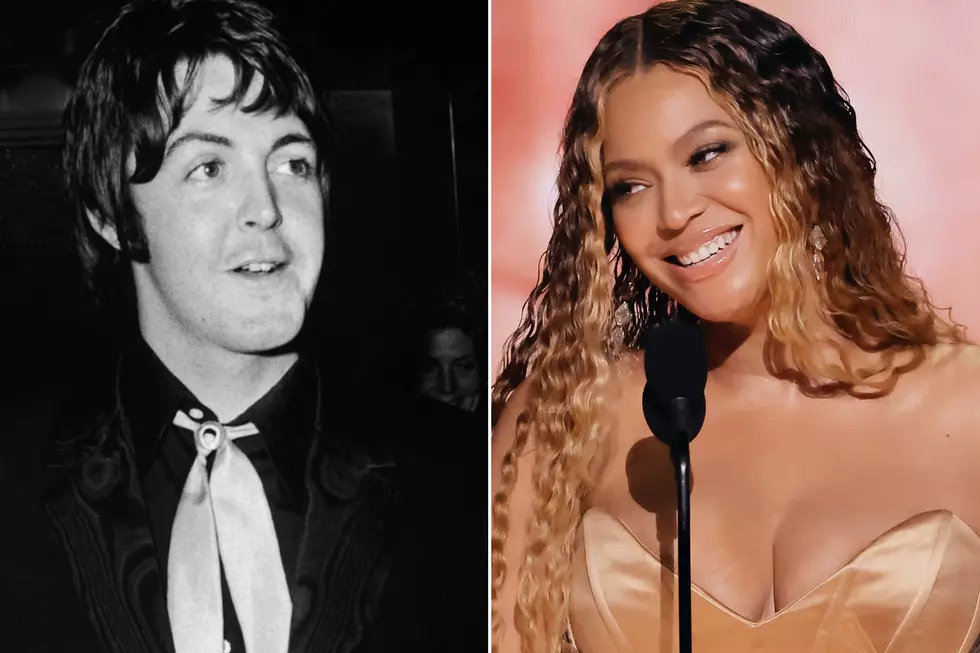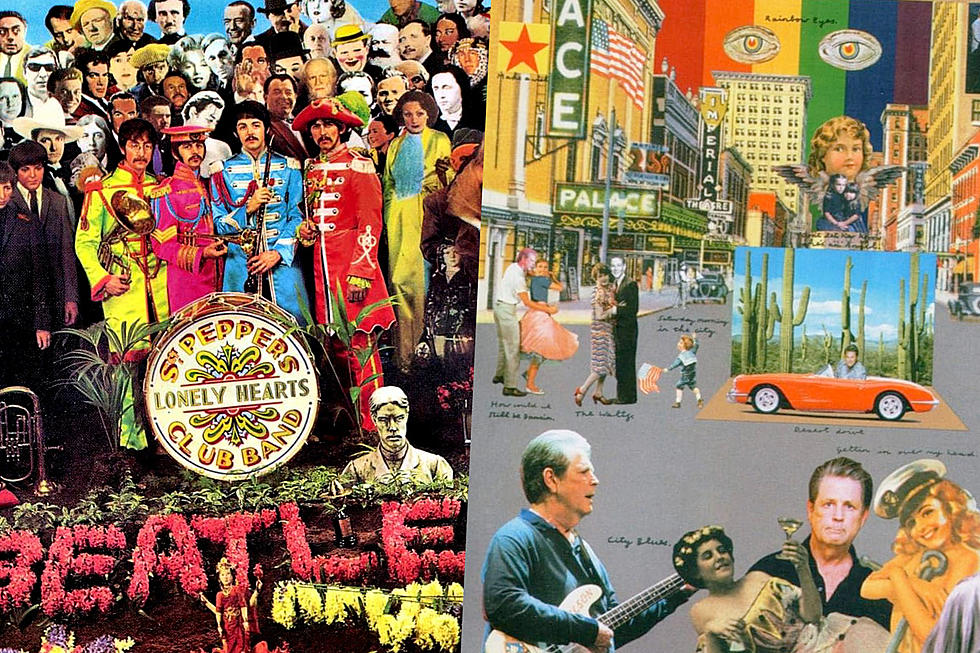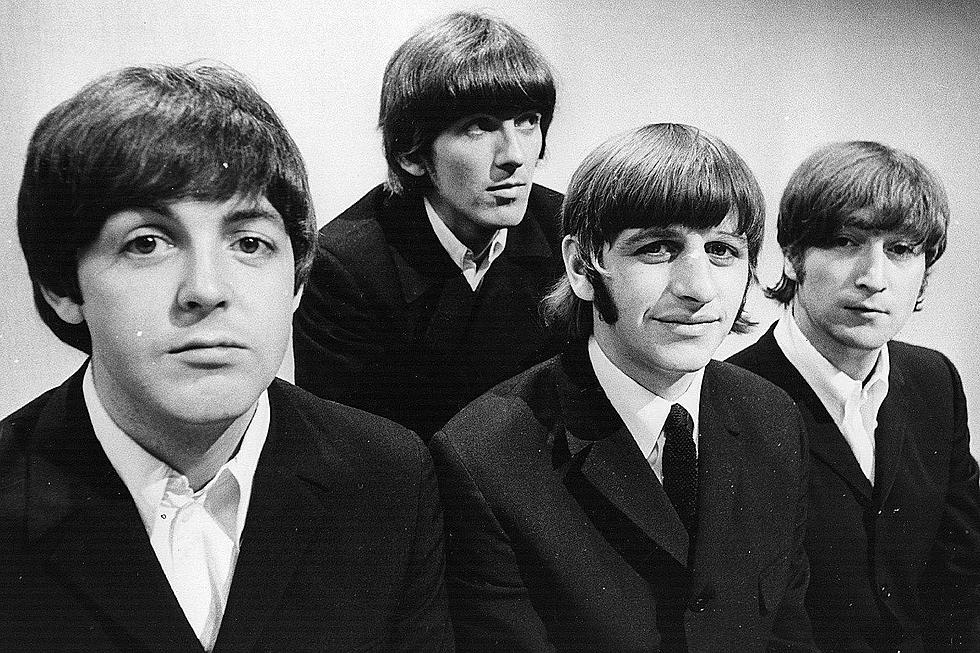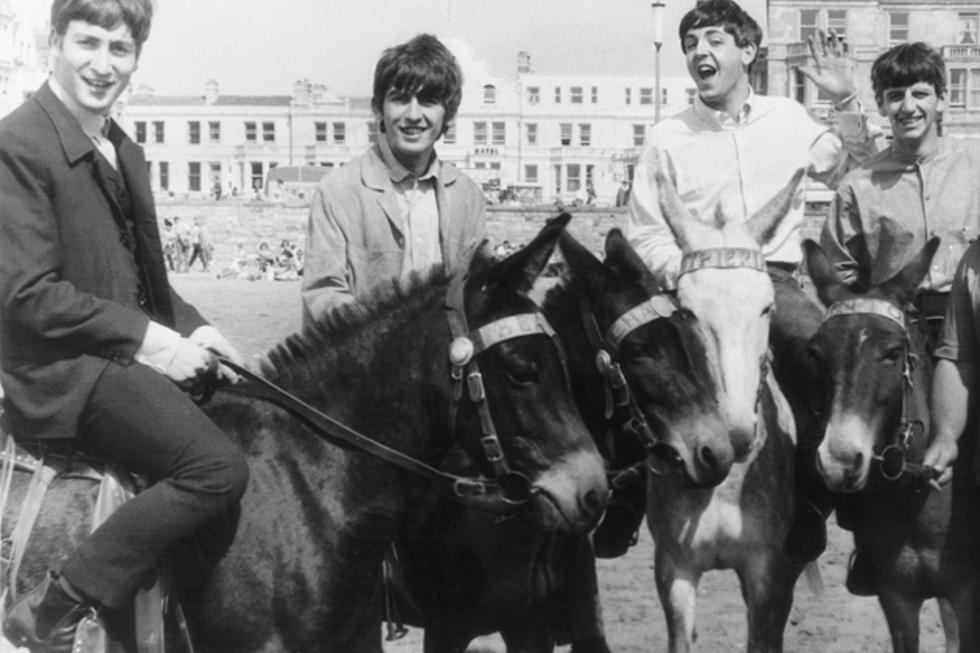
Top 10 Beatles Animal Songs
It would take a zoologist to catalog all of the Beatles Animal Songs; whether in the air, on the ground or under the sea, the Fab Four have name checked many kinds of critters. They often chose species whose names have double meanings or symbolize social movements; one avian tune was inspired by a street address. Grab your binoculars and bug spray and join us in search of the Top 10 Beatles Animal Songs.
- 10
'Rocky Raccoon'
From: 'The Beatles' (1968)'Rocky Raccoon,' Paul McCartney's Old West tune of love and revenge, was actually written 7,000 miles away from the black mountain hills of Dakota. “I was sitting on the roof in India with a guitar – John and I were sitting ‘round playing guitar,” McCartney told Radio Luxembourg. “And I started playing the chords of ‘Rocky Raccoon.’” McCartney eventually changed Rocky’s name from “Sassoon” to “Raccoon,” because "it sounded more like a cowboy.”
Producer George Martin contributed the saloon-style honky-tonk piano as McCartney wrote the lyrics on the fly at Abbey Road. “'Rocky Raccoon' is quirky, very me,” McCartney said in 'Many Years From Now.' “I like talking blues so I started off like that, then I did my tongue-in-cheek parody of a western and threw in some amusing lines. I just tried to keep it amusing, really; it's me writing a play, a little one-act play giving them most of the dialogue.”
- 9
'Hey Bulldog'
From: 'Yellow Submarine' (1969)When former Manfred Mann lead singer Paul Jones recorded 'The Dog Presides,' the session featured barking sound effects and an unlikely drummer: Paul McCartney. A few days later, the Beatles entered the studio to record 'Hey Bullfrog,' which John Lennon in 'All We Are Saying' would call, “a good sounding record that means nothing.'
In 'Many Years From Now,' McCartney said, “There's a little rap at the end between John and I, we went into a crazy little thing at the end.” Recalling the Paul Jones session, McCartney unexpectedly began to bark like a dog. The Beatles liked it so much that they changed the title to 'Hey Bulldog.' McCartney explained, “We always tried to make every song different because we figured, ‘Why write something like the last one? We've done that.’ We were on a ladder so there was never any sense of stepping down a rung, or even staying on the same rung, it was better to move one rung ahead.”
- 8
'Blue Jay Way'
From: 'Magical Mystery Tour' (1967)In Aug. 1967, George Harrison rented a house in the Hollywood Hills on a street named Blue Jay Way. A visit from former Beatles publicist Derek Taylor would yield one of the Top 10 Beatles Animal Songs, 'Blue Jay Way.' “Derek Taylor got held up. He rang to say he'd be late. I told him on the phone that the house was in Blue Jay Way,” Harrison said in 'The Beatles' by Hunter Davies. “There was a fog and it got later and later. To keep myself awake, just as a joke to pass the time while I waited, I wrote a song about waiting for him in Blue Jay Way. There was a little Hammond organ in the corner of this house which I hadn't noticed until then... so I messed around on it and the song came.” The opening line, “There's a fog upon L.A. / And my friends have lost their way,” sets the spacey, psychedelic vibe, which is exaggerated by vocals played backwards during the mix.
- 7
'Everybody’s Got Something to Hide Except Me and My Monkey'
From: 'The Beatles' (1968)When John Lennon and Yoko Ono began taking heroin in 1968, it alarmed the other Beatles and directly impacted Lennon’s music. “He was getting into harder drugs than we'd been into and so his songs were taking on more references to heroin,” Paul McCartney said in 'Many Years From Now.' “Until that point we had made rather mild, oblique references to pot or LSD. Now John started talking about fixes and monkeys."
Lennon, however, maintained that 'Everybody’s Got Something to Hide Except Me and My Monkey' was not about having a monkey on his back. “That was just a sort of nice line that I made into a song. It was about me and Yoko,” Lennon said in 'All We Are Saying.' “All this sort of madness is going on around us because we just happened to want to be together all the time.”
- 6
'Dig a Pony'
From: 'Let It Be' (1970)'Dig a Pony' was recorded during the famous rooftop concert of the film 'Let It Be.' Though 'Dig a Pony' was influenced by his relationship with Yoko Ono, John Lennon maintained that most of the lyrics were nonsense. In the documentary 'Imagine,' Lennon said, “I was just having fun with words. It was literally a nonsense song. You just take words and you stick them together, and you see if they have any meaning. Some of them do and some of them don't.”
Some that do have meaning may reference the Rolling Stones. Lennon once claimed that Mick Jagger and the boys repeatedly ripped off the Fab Four. Everything the Beatles do, Lennon told Rolling Stone, “Mick does exactly the same. They are not in the same class, musicwise or powerwise – never were.” Which would explain this line: “I roll a stoney / Well you can imitate everyone you know.” That’s cold, but it makes 'Dig a Pony' one of our Top 10 Beatles Animal Songs.
- 5
'Piggies'
From: 'The Beatles' (1968)In the 1960’s, “pig” was a popular derogatory term for the police, but George Harrison said in 'I Me Mine' that class and corporate greed, not cops, was the target of 'Piggies.' “‘Piggies’ is a social comment. I was stuck for one line in the middle until my mother came up with the lyric, ‘What they need is a damn good whacking,’ which is a nice simple way of saying they need a good hiding. It needed to rhyme with ‘backing,’ ‘lacking,’ and had absolutely nothing to do with American policemen.”
The track features a harpsichord, a string quartet and the sounds of pigs snorting, which Lennon put together from Abbey Road’s sound effects library. An additional verse, dropped from the record, was reinstated by Harrison in concert: “Everywhere there's lots of piggies / Playing piggy pranks / And you can see them on their trotters / Down at the piggy banks / Paying piggy thanks / To the pig brother.”
- 4
'Octopus's Garden'
From: 'Abbey Road' (1969)Ringo Starr only wrote two songs for the Beatles: 'Don’t Pass Me By' and the wonderful 'Octopus’s Garden.' “I wrote ‘Octopus’s Garden’ in Sardinia. Peter Sellers had lent us his yacht and we went out for the day,” Starr said in 'Anthology.' “I stayed out on deck with the captain and we talked about octopuses. He told me that they hang out in their caves and they go around the seabed finding shiny stones and tin cans and bottles to put in front of their cave like a garden. I thought this was fabulous, because at the time I just wanted to be under the sea too. A couple of tokes later with the guitar – and we had 'Octopus’s Garden'!”
George Harrison, who helped Starr with the tune, acknowledged its lyrical depth. “On the surface, it's just like a daft kids’ song, but the lyrics are great,” Harrison told Ritchie Yorke. “I find very deep meaning in the lyrics, which Ringo probably doesn’t see.” The song’s undersea sound effects came from Starr blowing bubbles into a glass of water.
- 3
'Blackbird'
From: 'The Beatles' (1968)'Blackbird' was entirely a solo effort by Paul McCartney, accompanied only by his acoustic guitar and tapping foot, which was recorded by a mic on the floor. The sound of blackbirds was later overdubbed. McCartney wrote the song in Scotland, though he was inspired by racial turmoil in America. In 'Many Years From Now,' McCartney said, “Those were the days of the civil rights movement, which all of us cared passionately about, so this was really a song from me to a black woman, experiencing these problems in the States: ‘Let me encourage you to keep trying, to keep your faith, there is hope.’” The opening of 'Blackbird' reveals the influence of Bach’s 'Bourree in E minor,' a favorite of McCartney and George Harrison as young guitarists.
- 2
'And Your Bird Can Sing'
From: 'Yesterday... and Today' (1966)Throughout the Beatles’ catalog, cryptic lyrics usually identify a tune as pure John Lennon. “‘And Your Bird Can Sing’ was John's song,” Paul McCartney said in 'Many Years From Now.' “I suspect that I helped with the verses because the songs were nearly always written without second and third verses. I seem to remember working on that middle eight with him but it's John's song, 80-20 to John.”
The reference to a “bird,” or “girl” in British slang, may be another slap at Mick Jagger, who would often boast about his girlfriend, pop singer Marianne Faithfull. But what makes 'And Your Bird Can Sing' one of the Top 10 Beatles Animal Songs is the rich double-lead guitar work by McCartney and George Harrison.
- 1
'I Am the Walrus'
From: 'Magical Mystery Tour' (1967)It’s no mystery why the lyrics of John Lennon’s classic, 'I Am the Walrus,' are confusing; the song is a stew of influences that include a nursery rhyme and a poem by Lewis Carroll, who wrote 'Alice in Wonderland.' Psychedelics also played a part in writing the first two lines: “I am he as you are he as you are me and we are all together / See how they run like pigs from a gun, see how they fly." “The first line was written on one acid trip one weekend,” Lennon said in 'All We Are Saying.' "The second line was written on the next acid trip the next weekend, and it was filled in after I met Yoko.”
The playground rhyme, “Yellow matter custard, green slop pie, all mixed together with a dead dog's eye” would become “Yellow matter custard, dripping from a dead dog's eye.” Carroll’s poem, “The Walrus and the Carpenter,” would provide the title character. As the song ends, we hear a few lines from Shakespeare’s 'King Lear.' Lennon chanced upon a BBC radio broadcast of the play, recorded it and mixed it into the song.
- BONUS
Think You Know The Beatles?
More From Ultimate Classic Rock
